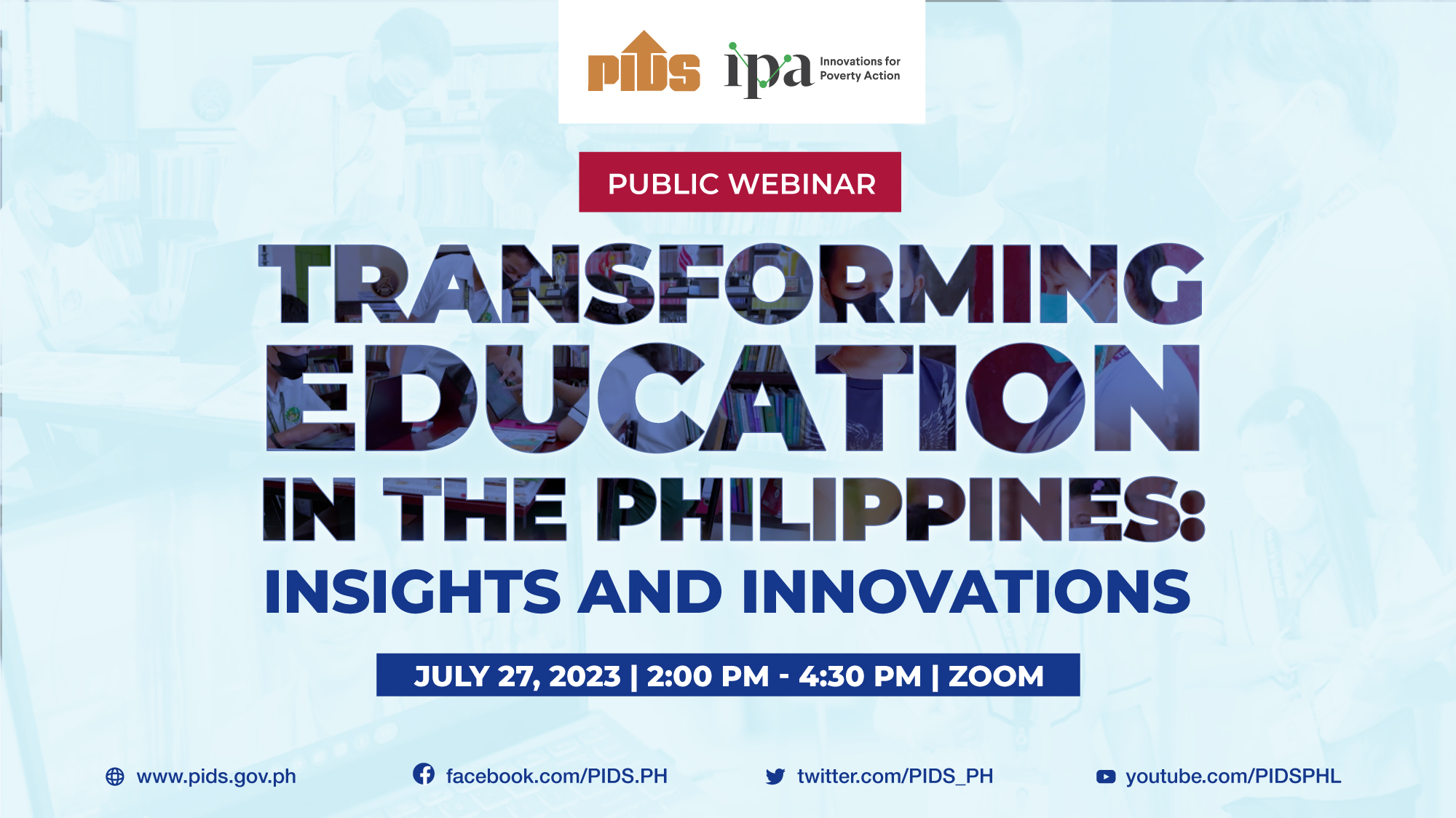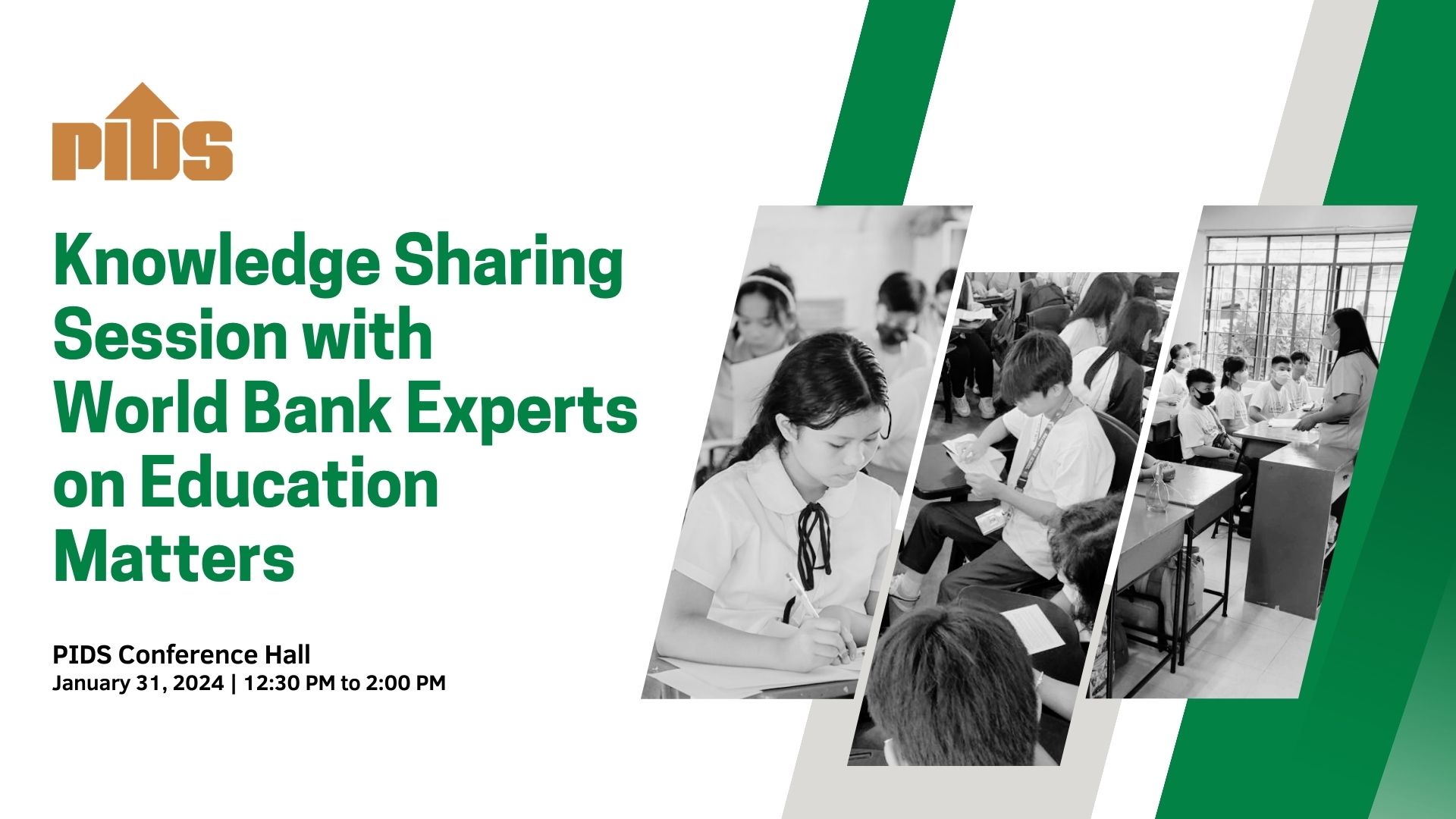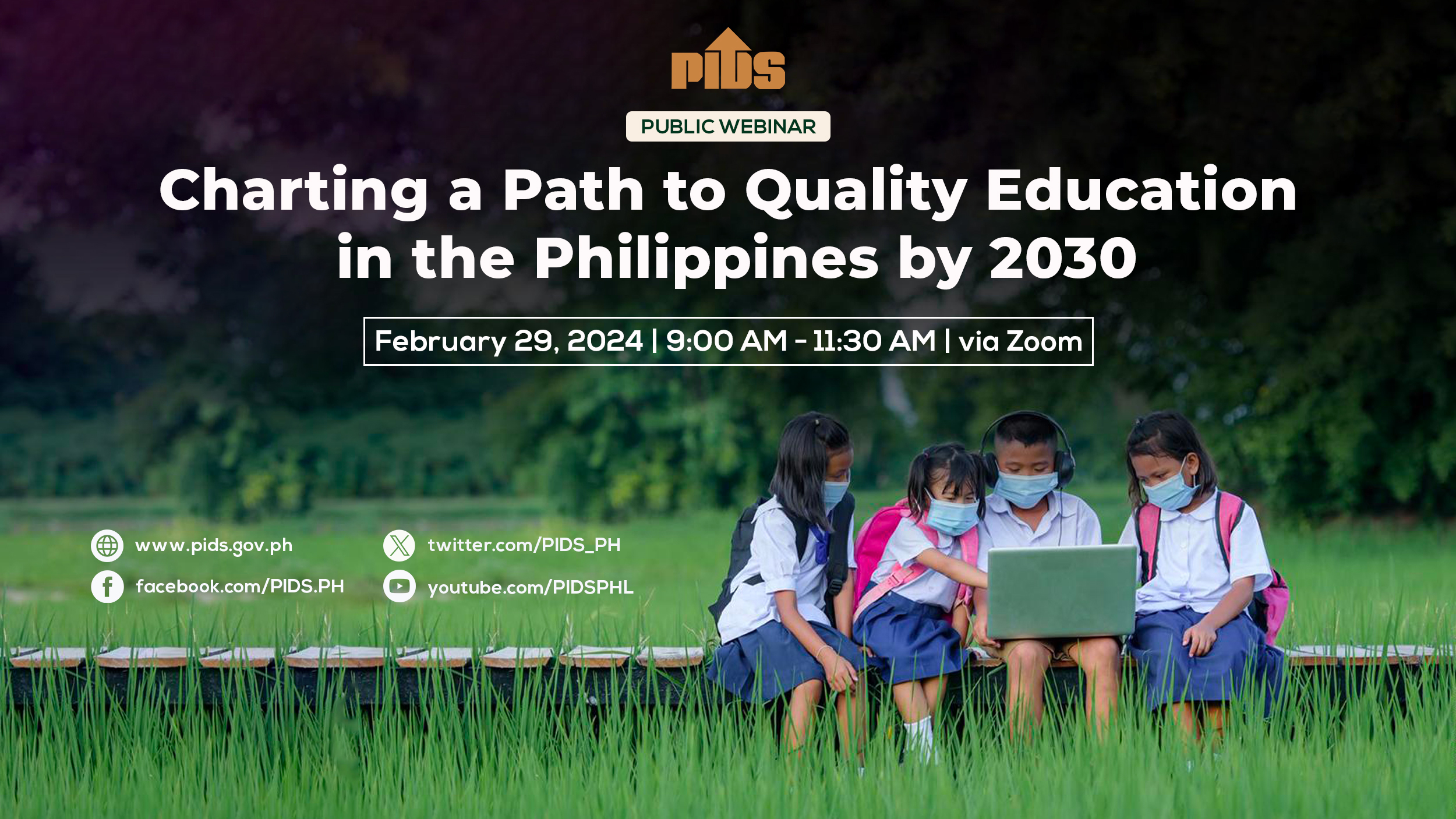For some time now, early studies of Philippine education had shown in several assessments that much needs to be done in reforming the system so that it can begin to catch up with the more progressive countries in the region.
These studies are the Monroe survey in 1925; Prosser survey in 1930; UNESCO survey in 1949; Swanson survey in 1960; Presidential Commission to survey Philippine education in 1968; Soutelle Report in 1975; Educational Commission (EDCOM) in 1991; Philippine education sector study of World Bank and ADB in 1999; and several other sectoral surveys.
The Monroe survey showed that we have a highly centralized system, and one that needed to be humanized, and textbooks and foreign educational materials that needed to be adapted to Philippine life.
The Swanson survey likewise recommended the need to adapt teaching materials to local conditions.
The Soutelle Report noted a high dropout rate, and that it would take eight years of schooling to produce an elementary school graduate.
Many schools were ill-equipped to provide knowledge on contemporary issues; teachers complained about lack of appropriate teaching materials and felt that they lacked sufficient knowledge. EDCOM also found a high dropout rate especially in the rural areas, too little investment in education, a low achievement rate of pupils, and disparities in access to education.
In 2012, the Philippine Institute of Development Studies (PIDS) reported on inequality of access to kindergarten education and day care centers, as well as the poor quality of preschool learning, and poor survival rate in early education. Of those who entered Grade I, only three out of four finished Grade 6. Both elementary and secondary education were found to be of poor quality.
The 1987 Constitution addressed most of these concerns through provisions that emphasized “critical thinking and creativity,” encouraging self-and independent learning, and the development of informal, nonformal and indigenous learning systems.
The Governance Act for Basic Education subsequently stipulated the establishment of an alternative learning system to provide out-of-school children, youth, and adult populations with basic education.
From the above, we can conclude that over the past 12 decades or so, we have been experiencing crisis in one form or another. But it had to take a pandemic and the 2018 report by the Programme for International Student Assessment (PISA) for us to openly acknowledge that indeed, we are in a deep crisis. As most know by now, our students ranked last in reading and second to the last in mathematics and science in comparison with students from 79 countries.
Research studies done by UNESCO and other groups of scholars have shown that students learn how to read and write faster when taught in a language spoken by the child at home. Multilingual children have the advantages of enhanced memory, language learning skills, as well as multitasking activities. They feel more comfortable asking and answering questions, sharing their thoughts and doing things on their own. These behaviors foster critical skills. It means that they are more in control of their learning.
Research in countries where students learn first in their mother tongue learned foreign languages faster than others. Thus, our students who participated in the PISA assessment were in a way disadvantaged as they have been taught in a foreign language.
It will be remembered that the introduction of the Mother Tongue-based Multilingual approach to learning or MTB-MLE, the program based on Republic Act of 2013 or the Enhanced Basic Education Act of 2013 was fairly recent. Although it was introduced with the K to 12 Basic Education Program, it is still struggling with birth pains, like the lack of adequate learning materials and well-trained teachers.
It requires considerable investment – for the training of teachers, sourcing and development of materials in some eight native languages.
The inequality in access to learning as well as quality of instruction had been exacerbated by COVID-19. Some 171 million pupils enrolled in primary and secondary schools all over the world have been affected due to school closures.
In the Philippines, some 2.3 million students were forced to drop out for varying reasons, among them, problems of connectivity, health, apathy, tardiness, absenteeism, and computer illiteracy. Parents have complained about having to spend 40 percent more to support online learning.
Bridging these serious gaps, among them, lack of enough trained teachers, and quality learning materials, and connectivity, all needing larger investments would require continuing advocacy and collaboration among stakeholders.
Considering all these challenges –a budget which is one of the lowest in the ASEAN –17 percent of the national budget while many of our neighbors are spending 20 percent or more; a huge student and teacher population (27,770 million enrolled at beginning of school year and 800,000 teachers); the sudden shift to distance learning and having to face what she describes as “alarmist, false information, as she is focused on telling the truth; as she tries to contextualize the curriculum to make it relevant –these are all herculean tasks for one who should be enjoying a peaceful retirement.
I think that at the end of the day, we shall prevail. We have many talented, wise, and well-intentioned stakeholders who are aware of what needs to be done and how to go about it.












